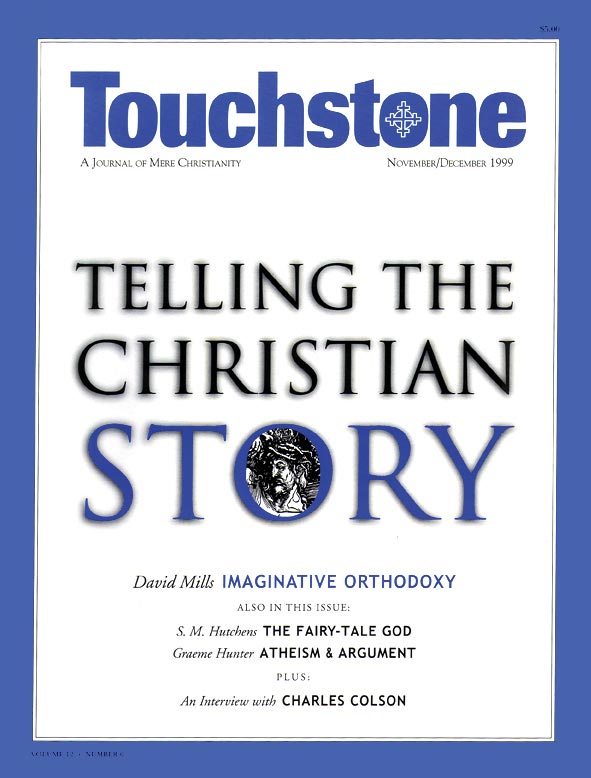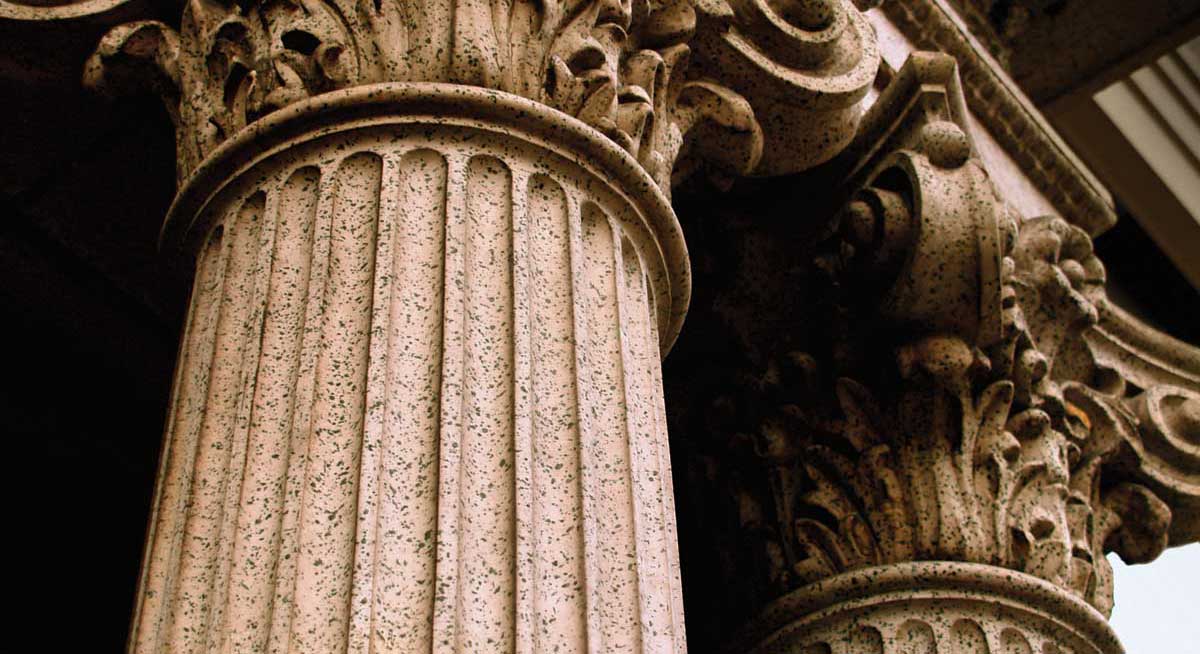“Diminish Not a Word”
Recently, Dr. George Carey, the Archbishop of Canterbury, wrote a very foolish thing. In a forty-page booklet called “Jesus 2000,” he had this to say: “I can tell you frankly that while we can be absolutely sure that Jesus lived and that he was certainly crucified on the cross, we cannot with the same certainty say that we know he was raised by God from the dead.”
This particular archbishop does (at least according to all reports) believe in the resurrection of our Lord, but as the rather silly title “Jesus 2000” indicates, he was writing one of those “turn of the millennium” pieces that has brought out the fool in so many other grown men and women who ought to know better.
That big round number “2000” seems to demand of certain people some sort of proof that they are up-to-date in every way, and especially that they are more sophisticated than the average Christian. Thus, the archbishop adopts the knowing, superior tone of one man of the world speaking to another, after the children have been put to bed and the peasants have been sent home to their huts: “I can tell you frankly,” etc.
When the members of the British press learned what the archbishop had written, they had a field day with headlines about the Archbishop of Canterbury’s having denied the resurrection; but they missed the point of the story, too. Carey hadn’t set out to deny the resurrection. He had intended his booklet to be an evangelical “apology” or explanation of Christian belief. But in the process he had gotten lost in the sloppy materialism and self-centered individualism of this age, and he had ended up by apologizing for the fact that Christians believe anything at all.
Materialism tells us that nothing is true in any kind of objective, definitive way, unless (perhaps) it can be proved in a scientific laboratory. This attitude explains why materialists also don’t believe in such things as marriage or heroism, any more than they believe in the resurrection. The life of persons, whether of ordinary human beings or of the Persons of the Blessed Trinity, cannot be moved to the laboratory for study. This is so because every self-aware life participates in the supernatural. Self-awareness itself is not a part of ordinary physical nature, and a good marriage or a heroic act is the result of supernatural intervention to a far greater extent than it is the result of hormones secreted by our endocrine glands.
Materialism must be relativistic about anything as complex as consciousness, since our science has not (and may never) attain to a sufficient complexity to study it. The events in history that follow from the consciousness of persons, then, are even more complex still, especially if more than one person is involved. And if a historical event is unique, as is the case with a particular happy marriage or the resurrection of our Lord and Savior Jesus Christ, the whole system of materialist science breaks down, since the only evidence that makes sense out of the few available physical details is the testimony of the witnesses who saw or participated in an event.
Carey ignores these realities when he suggests that the life or crucifixion of Jesus Christ is somehow “more knowable” than the resurrection. This is a word game to massage the egos of unbelievers, whose sticking point isn’t that Jesus of Nazareth lived or died, but that he rose again from the dead as the Glorified Son of God and Master of Life. But we know about the life, death, and resurrection of Jesus Christ in much the same way that we know about the Battle of Gettysburg, with the exception that Civil War historians (and their eyewitness sources) have not received the promise of the Holy Ghost to perfect their accounts, as the Evangelists (and their eye witnesses) did.
We wouldn’t consider a person who denied that the Battle of Gettysburg took place, because it can’t be proved in a laboratory, a “sophisticate.” We would consider him a dolt. But Carey has tried to engage non-believers on the basis of their unbelief, and he has ended up falling into the trap of self-centered individualism that follows inevitably from the materialistic denial of non-laboratory reality. If nothing can be proved, then the most important thing about any claim of fact, whether it is the resurrection of Jesus Christ or the landing of men on the moon, is “how it makes me feel.”
Materialists aren’t “hard-eyed realists.” They are dewy-eyed emotionalists, who (after denying the validity of everyone else’s eyewitness testimony) look to their own inner feelings to provide the reality or relevance of the rest of the world, past, present, or future. This dependence on emotion is sometimes called “childlike,” but it is only “childish.” And it was childish of Carey to think that how he feels about the resurrection matters very much to anyone at all; or that sharing his feelings would convince people to believe in it, after he had granted them his blanket permission to deny a fact of history if they felt like it.
Religion isn’t a matter of choice or style (“you say ‘potato’ and I say ‘po-tah-to’”). It is a hard business of facts and realities upon which we bet our lives, much the same way that we bet our lives every time we drive our cars onto a bridge.
When we venture out onto a bridge, we are betting that the designers and the builders got things right; that their math checked out; and that their understanding of materials and physics corresponds to objective reality. We probably didn’t meet the builders or see the bridge being built, but we trust the judgment of those that did and subsequently approved the bridge for use. And we prove the bridge when we drive across it. This may sound like a “no-brainer,” but if we had all agreed that a tissue-paper bridge would be better than the nasty old concrete and steel sort of bridge, because it would be cheaper, prettier, and more emotionally satisfying to us all, the outcome would have been remarkably different.
Louis R. Tarsitano (d. 2005), a former associate editor of Touchstone, was a priest of the Anglican Church in America and rector of St. Andrew?s Church in Savannah, Georgia. He also was the co-author, with Peter Toon, of Neither Archaic Nor Obsolete: The Language of Common Prayer & Public Worship (Brynmill Press, Ltd., 2003).
subscription options
Order
Print/Online Subscription

Get six issues (one year) of Touchstone PLUS full online access including pdf downloads for only $39.95. That's only $3.34 per month!
Order
Online Only
Subscription

Get a one-year full-access subscription to the Touchstone online archives for only $19.95. That's only $1.66 per month!
bulk subscriptions
Order Touchstone subscriptions in bulk and save $10 per sub! Each subscription includes 6 issues of Touchstone plus full online access to touchstonemag.com—including archives, videos, and pdf downloads of recent issues for only $29.95 each! Great for churches or study groups.
Transactions will be processed on a secure server.
more from the online archives
calling all readers
Please Donate
"There are magazines worth reading but few worth saving . . . Touchstone is just such a magazine."
—Alice von Hildebrand
"Here we do not concede one square millimeter of territory to falsehood, folly, contemporary sentimentality, or fashion. We speak the truth, and let God be our judge. . . . Touchstone is the one committedly Christian conservative journal."
—Anthony Esolen, Touchstone senior editor









